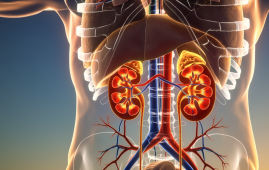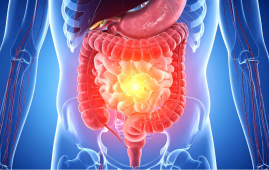

The tumor microenvironment (TME) is a highly complex and adaptive network where tumor cells interact with immune cells, stromal cells, extracellular matrix (ECM), cytokines, and signaling molecules. A crucial player in this environment is long non-coding RNAs (lncRNAs)—non-protein-coding transcripts over 200 nucleotides in length—that profoundly influence the behavior of both cancerous and non-cancerous cells in the TME.
lncRNAs and TME Dynamics
Molecular regulators within the tumor microenvironment are emerging as critical influencers of gene expression, shaping processes such as immune evasion, angiogenesis, metastasis, and metabolic reprogramming. These elements function at transcriptional, post-transcriptional, and epigenetic levels, affecting tumor progression both directly and indirectly.
They promote cancer cell proliferation, alter stromal cell function, and assist in creating a pro-tumorigenic environment by facilitating the transformation of normal fibroblasts into tumor-associated fibroblasts (TAFs). This transformation supports tumor growth, enhances invasion, and contributes to therapy resistance.
lncRNAs in Tumor-Associated Fibroblasts
Within TAFs, lncRNAs like MALAT1 and DNM3OS are highly expressed, playing vital roles in promoting cancer invasiveness and radiation resistance. In oral squamous cell carcinoma, the lncRNA LOC100506114 is upregulated, aiding in TAF transformation and accelerating tumor progression.
lncRNAs and Angiogenesis
Angiogenesis—the formation of new blood vessels—is crucial for tumor survival. lncRNAs such as PVT1 in gastric cancer and NR2F1-AS1 in breast cancer enhance angiogenic signaling by upregulating VEGFA and endothelial markers. Their inhibition has shown to reduce vascularization and increase chemotherapy efficacy, presenting them as valuable therapeutic targets.
lncRNAs and Immune Modulation in TME
lncRNAs also manipulate immune cells in the TME to evade detection. For instance, in breast cancer, HISLA is transferred via exosomes from tumor-associated macrophages to cancer cells, enhancing glycolysis and chemoresistance. Others like NEAT1 downregulate immune checkpoints, further weakening immune surveillance.
Exosomal lncRNAs as Communication Tools
Exosomal lncRNAs serve as messengers between tumor and stromal cells. The lncRNA CRNDE, transmitted via exosomes from macrophages to gastric cancer cells, promotes chemotherapy resistance by degrading the tumor suppressor gene PTEN. These exosomal transfers reveal potential intervention points for halting tumor progression.
Clinical Implications and Therapeutic Opportunities
lncRNAs in the tumor microenvironment are gaining attention as non-invasive biomarkers for early cancer detection due to their stability and tissue-specific expression. They are also being explored as targets for new cancer therapies using technologies like RNA interference, antisense oligonucleotides, and CRISPR. Challenges remain in delivery and specificity, but emerging nanotechnologies may soon overcome these barriers.
Conclusion
The strategic targeting of lncRNAs in the tumor microenvironment offers a promising path to disrupt tumor-supportive mechanisms and combat drug resistance. With their expanding relevance in oncology, lncRNAs represent not only a deeper understanding of cancer biology but also a frontier for innovative diagnostics and treatments.
For more information: Beylerli, O., et al. (2025). Tumor Microenvironment Dynamics: The Regulatory Influence of Long Non-coding RNAs. Gene Expression. doi.org/10.14218/ge.2024.00069.
more recommended stories
 36-Week Pre-eclampsia Screening May Reduce Term Risk
36-Week Pre-eclampsia Screening May Reduce Term RiskA New Preventive Strategy for Term.
 Cardiovascular Risk and Sudden Cardiac Death in Diabetes
Cardiovascular Risk and Sudden Cardiac Death in DiabetesRising Sudden Cardiac Death (SCD) Risk.
 Poor Kidney Function and Alzheimer’s Biomarkers Explained
Poor Kidney Function and Alzheimer’s Biomarkers ExplainedPoor kidney function may influence levels.
 Walking Speed Before Hip Replacement Predicts Recovery
Walking Speed Before Hip Replacement Predicts RecoveryNew Evidence Points to a Simple,.
 Neuroblastoma Drug Combo Extends Survival in Models
Neuroblastoma Drug Combo Extends Survival in ModelsA Promising Shift in High-Risk Neuroblastoma.
 How Soybean Oil Impacts Weight Gain and Metabolism
How Soybean Oil Impacts Weight Gain and MetabolismWhy Soybean Oil May Affect Metabolism.
 Coffee and Cognitive Function: Evidence Review
Coffee and Cognitive Function: Evidence ReviewA new narrative review in Cureus.
 Colorectal Cancer Screening Rates Low in Adults 45–49
Colorectal Cancer Screening Rates Low in Adults 45–49Recent UCLA research reveals that colorectal.
 Gut Immune Cells and Long-Lasting Antiviral Protection.
Gut Immune Cells and Long-Lasting Antiviral Protection.Breakthrough Findings on How Gut Immune.
 Mild Pancreatic Duct Dilatation Signals Higher Cancer Risk
Mild Pancreatic Duct Dilatation Signals Higher Cancer RiskEarly Structural Changes Offer Critical Clues.

Leave a Comment